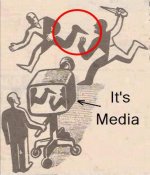peterm1
Veteran
I have often wondered about the idea of "truth" or "verity" in art. The only sense in which its true that verity is important is in the sense that a piece of art has to "speak" to the viewer / person engaging with it. If a piece of art (be it a photo a painting or something else) does not engage the interest and emotions of the viewer then the art does not work in my view - it has no emotional engagement. I think that this is the sense in which people often use the term truth or verity.
The odd thing is that this does not mean an image for example has to be an accurate representation of the physical appearance of the subject. This is what impressionists and abstract artists have found. By painting a picture which does not simply portray the subject its possible to create an image that is somehow MORE truthful than a simple representational image. ie if done well it can convey an inner truth about the subject that otherwise is hidden.
Anyway that's what I think and this is the reason why many of my images are not just photos of things or people - I often try to play with lighting or distortion to make the image somehow convey more than just an impression of how the subject looks.
The odd thing is that this does not mean an image for example has to be an accurate representation of the physical appearance of the subject. This is what impressionists and abstract artists have found. By painting a picture which does not simply portray the subject its possible to create an image that is somehow MORE truthful than a simple representational image. ie if done well it can convey an inner truth about the subject that otherwise is hidden.
Anyway that's what I think and this is the reason why many of my images are not just photos of things or people - I often try to play with lighting or distortion to make the image somehow convey more than just an impression of how the subject looks.


